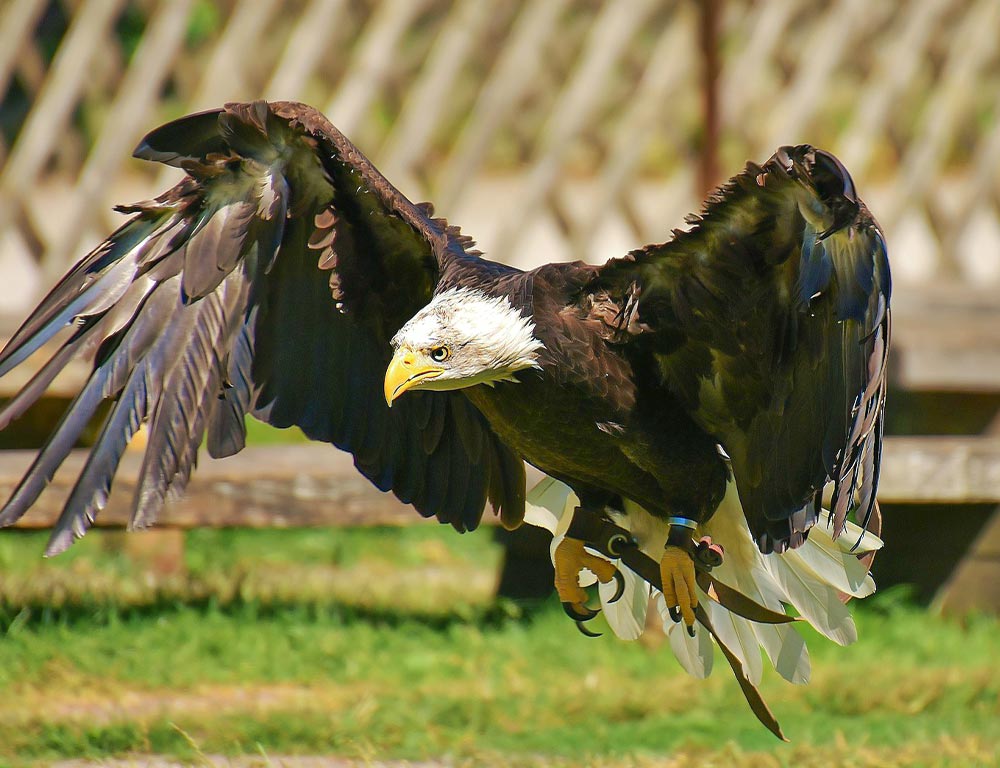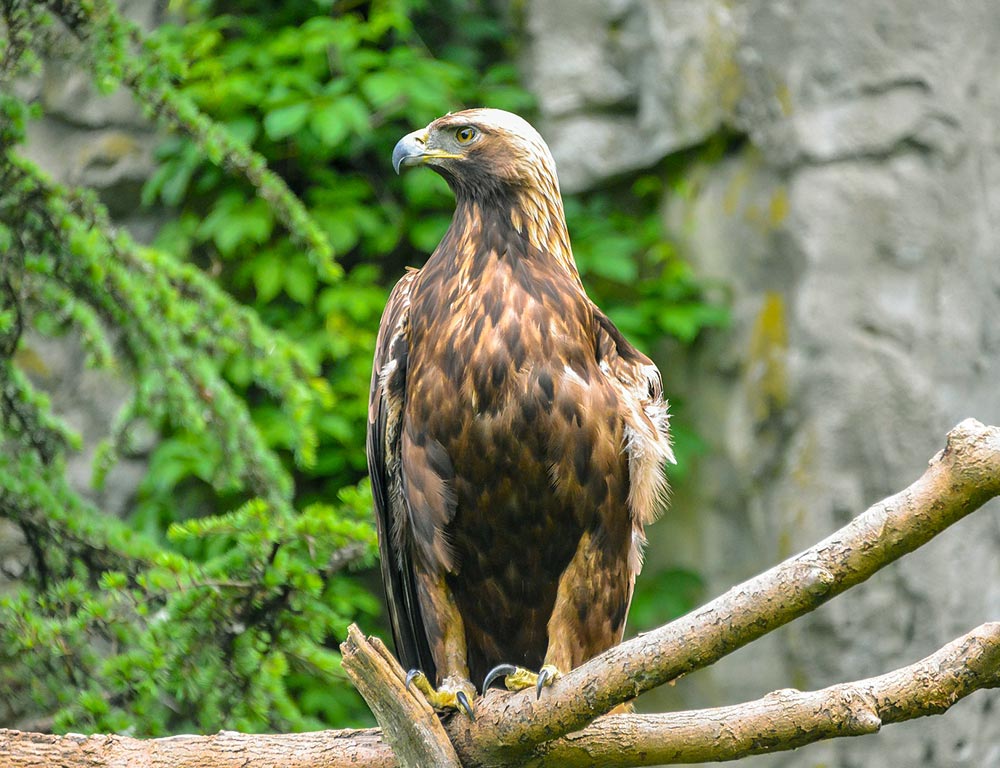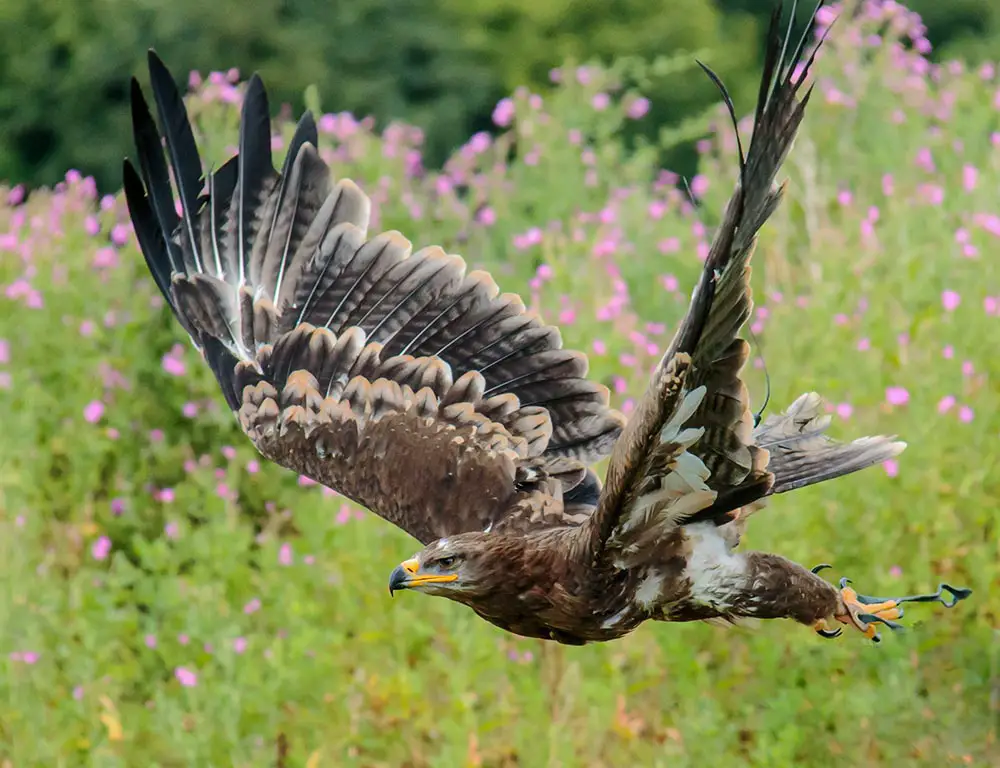Dive into the skies of Texas and discover the majestic winged guardians soaring above its diverse landscapes. In this exploration, we unveil the various types of eagles that grace the Lone Star State with their awe-inspiring presence.
From the iconic Bald Eagle, symbolizing freedom and strength, to the powerful Golden Eagle, each species contributes to the ecological richness of Texas.
Join us on a journey to learn about their distinct characteristics, habitats, and the vital roles these eagles play in maintaining the delicate balance of Texas’ ecosystems.
As we explore the habitats they call home, you’ll gain a deeper appreciation for these remarkable birds of prey and their significance in Texas’s vast and varied landscapes.
Common Characteristics of Eagles in Texas
Several species of eagles can be found in Texas, but the most prominent and well-known is the Bald Eagle (Haliaeetus leucocephalus). Here are some common characteristics of eagles, particularly the Bald Eagle, in Texas:
Appearance
Adult Bald Eagles are easily recognizable by their striking appearance. They have a distinctive white head and tail, contrasting with a dark brown body and wings.
Juveniles are mostly brown with mottled white on the underparts and lack the characteristic white head and tail until they reach maturity at around four to five years of age.
Size
Bald Eagles are large birds of prey. They have a wingspan ranging from 6 to 7 feet, and adults typically weigh between 8 and 14 pounds. Their size makes them one of the largest raptors in North America.
Habitat
Eagles in Texas, especially Bald Eagles, can be found near large bodies of water such as lakes, reservoirs, rivers, and coastal areas.
They prefer habitats with abundant fish, their primary food source, and often inhabit areas with a mix of open water and adjacent wooded areas.
Behavior
Eagles are known for their powerful and soaring flight. They use their keen eyesight to spot prey from a considerable distance.
Bald Eagles are also skilled hunters, and their diet includes fish, waterfowl, and occasionally small mammals.
Nesting
Bald Eagles in Texas, like in other regions, build large nests in tall trees near water.
These nests are often reused and can grow to impressive sizes over the years. The nesting season typically occurs in the fall and winter, with the eaglets hatching in the following spring.
Migration
While some eagles in Texas are year-round residents, others may migrate to the state during winter. The migration patterns can vary depending on factors such as food availability and weather conditions.
Conservation Status
Bald Eagles were once listed as endangered, but successful conservation efforts, including habitat protection and banning the pesticide DDT, have led to their recovery.
In 2007, the Bald Eagle was removed from the federal list of endangered and threatened species.
Symbolic Significance
Bald Eagles hold significant cultural and symbolic importance in the United States, including Texas, where they are often associated with freedom and national pride.
They are protected by various federal and state laws to ensure their continued conservation.
It’s worth noting that Texas is also home to another eagle species, the Golden Eagle (Aquila chrysaetos), which shares some characteristics with the Bald Eagle but has distinct differences in appearance and behavior.
Observing eagles in the wild requires patience and respect for their natural habitats, and it’s important to follow ethical birdwatching practices to minimize disturbance.
2 Types of Eagles in Texas
Explore the skies of Texas and meet the majestic eagles that reign as winged guardians over its landscapes.
This journey unveils the diverse types of eagles, from the iconic Bald Eagle to the powerful Golden Eagle, showcasing their roles in Texas’ vibrant ecosystems.
1. Bald Eagle

- Scientific name: Haliaeetus leucocephalus
- Category: Sea eagle
- Population: The population in Texas is around 180 breeding pairs.
- Life span: Typically 20-30 years in the wild.
- Size: Adults can reach a length of 28 inches.
- Weight: Adults weigh 8-14 pounds.
- Food: Primarily fish, but they also eat birds and small mammals.
- Wingspan: Ranges from 6 to 7 feet.
- Status: Listed as a threatened species in Texas.
The Bald Eagle, a majestic symbol of the United States, thrives near water bodies in Texas. These raptors exhibit a strong fidelity to their nesting sites, often returning to the same location year after year.
They build large nests in tall trees near rivers and lakes. Bald Eagles are skilled hunters, utilizing their powerful talons to snatch fish from the water.
They also scavenge on carrion and occasionally prey on waterfowl. Mating for life, these eagles engage in breathtaking aerial displays during courtship.
2. Golden Eagle

- Scientific name: Aquila chrysaetos
- Category: Bird of prey
- Population: An estimated 1,200 pairs in Texas.
- Life span: Typically 15-20 years in the wild.
- Size: Adults can reach a length of 28-40 inches.
- Weight: Adults weigh 7-14 pounds.
- Food: Varied diet, including mammals, birds, and carrion.
- Wingspan: Ranges from 6 to 7.5 feet.
- Status: Not listed as threatened in Texas.
The Golden Eagle, a formidable apex predator, inhabits diverse landscapes across Texas. These birds prefer open country and mountainous terrains. Golden Eagles build nests on cliffs and ledges.
Known for their powerful flight and keen eyesight, they are efficient hunters, preying on small mammals and birds. Golden Eagles are solitary creatures, and each pair defends a large territory.
Their lifestyle reflects adaptability, as they can thrive in various environments, from deserts to mountains. These eagles are integral to Texas’ diverse avian fauna, showcasing strength and resilience in their natural habitats.
Where Are the Best Places to Spot Eagles in Texas?
Spotting eagles in Texas can be a rewarding experience, especially given the diverse habitats in the state.
While the Bald Eagle is the most iconic eagle species in Texas, the Golden Eagle is also present. Here are some of the best places to spot eagles in Texas:
Lake Livingston
Lake Livingston is located in East Texas, a reservoir known for hosting wintering Bald Eagles.
The lake’s open waters and nearby wooded areas provide suitable habitat for these majestic birds. Look for them perched in trees or soaring above the lake.
Caddo Lake
Caddo Lake, situated on the Texas-Louisiana border, is a unique cypress swamp habitat that attracts a variety of wildlife, including eagles. Exploring the lake by boat or along its shoreline may offer opportunities to spot Bald Eagles.
Lake Buchanan
Lake Buchanan is a popular location for wintering Bald Eagles in the Texas Hill Country. The lake’s fish-rich waters attract eagles; you may observe them fishing or roosting in the surrounding trees.
Galveston Island State Park
Coastal areas, such as Galveston Island, can be good for spotting eagles. The mix of marshes, beaches, and open waters provides suitable hunting grounds.
Keep an eye on the skies and shoreline for both Bald Eagles and, occasionally, the larger Golden Eagles.
Granger Lake
Located northeast of Austin, Granger Lake is known for attracting wintering Bald Eagles. The lake offers a combination of open water and wooded areas, creating an ideal environment for these raptors.
Possum Kingdom Lake
West of Fort Worth, Possum Kingdom Lake is another reservoir where you might spot Bald Eagles. The lake’s varied topography and ample fish populations make it attractive to eagles, especially during winter.
Brazoria National Wildlife Refuge
This coastal refuge, south of Houston, provides habitat for various bird species, including eagles. Explore the refuge’s trails and observation points to increase your chances of spotting both Bald and Golden Eagles.
Caprock Canyons State Park
Caprock Canyons State Park is known for its rugged landscapes in the Texas Panhandle. Golden Eagles can be found in this region, so hiking along the park’s trails may lead to eagle sightings.
Lake Texoma
Straddling the Texas-Oklahoma border, Lake Texoma is a large reservoir known for wintering Bald Eagles. The lake’s open water and wooded areas attract eagles looking for food and suitable roosting sites.
It’s essential to be patient and observant when attempting to spot eagles, particularly during winter when they may migrate to Texas.
Bring binoculars or a spotting scope to enhance your viewing experience, and respect wildlife and their habitats.
Additionally, consider visiting these locations early or late afternoon when eagles are more active.
How to Preserve Eagles in Texas?

Preserving eagles in Texas involves a combination of habitat conservation, public awareness, and adherence to conservation regulations.
Both the Bald Eagle and the Golden Eagle are protected under various federal and state laws, and efforts should be made to ensure the sustainability of their populations.
Here are several ways to contribute to the preservation of eagles in Texas:
Habitat Protection
Support and participate in initiatives that focus on preserving and restoring eagle habitats.
Protecting the diverse ecosystems, including lakes, rivers, coastal areas, and forests, where eagles find food and nesting sites, is crucial for their survival.
Conservation Organizations
Contribute to or volunteer with conservation organizations that work towards eagle protection and habitat preservation. Organizations such as the National Audubon Society,
The Nature Conservancy and local birding groups often engage in initiatives to safeguard raptors and their habitats.
Public Education
Raise awareness among the public about eagles and their conservation needs.
Education programs, workshops, and outreach efforts can help people understand the importance of these birds in the ecosystem and their role in maintaining a healthy environment.
Responsible Birdwatching
If you are a birdwatcher or wildlife enthusiast, practice responsible birdwatching.
Keep a safe and respectful distance from nesting sites and avoid disturbing eagles, especially during the breeding season. Follow ethical guidelines to minimize stress on the birds.
Report Injured or Distressed Eagles
If you encounter an injured or distressed eagle, report it to the appropriate authorities, such as local wildlife agencies or rehabilitators.
Prompt action can ensure that injured birds receive the necessary care and rehabilitation to be released back into the wild.
Support Wildlife Rehabilitation Centers
Contribute to or volunteer with wildlife rehabilitation centers that specialize in caring for injured or orphaned eagles. These centers play a crucial role in rehabilitating and releasing birds back into their natural habitats.
Advocate for Conservation Policies
Stay informed about and advocate for policies that protect eagles and their habitats. Support legislation that promotes conservation, responsible land use, and sustainable development to ensure the long-term survival of these majestic birds.
Prevent Lead Poisoning
Eagles can be affected by lead poisoning, often due to ingesting lead from spent ammunition. Support efforts to promote non-lead alternatives for hunting and fishing, and encourage responsible disposal of lead-containing materials.
Participate in Citizen Science Programs
Contribute to citizen science programs that monitor eagle populations. Reporting sightings, nesting activity, and other observations help scientists and conservationists gather valuable data for better understanding and protecting these species.
Respect Regulatory Guidelines
Be aware of and comply with federal and state regulations regarding eagles. These regulations may include restrictions on disturbing nests, capturing or possessing eagles or their parts.
Respect these guidelines to ensure the well-being and legal protection of the birds.
Preserving eagles requires a collective effort from individuals, communities, and organizations.
By actively participating in conservation initiatives and promoting a culture of respect for wildlife, we can contribute to the continued success of eagle populations in Texas and beyond.
Wrapping Up
The skies of Texas are graced by majestic eagles, symbolizing freedom and strength. Each species plays a vital role in the state’s ecosystems, from the iconic Bald Eagle to the powerful Golden Eagle.
Eagles contribute to the delicate balance of Texas’ diverse landscapes through their soaring flights and skilled hunting.
Understanding their distinct characteristics and habitats deepens our appreciation for these winged guardians. Conservation efforts are crucial to ensuring the continued presence of eagles, preserving their significance in the Lone Star State.
Let the soaring eagles inspire awe and admiration as they symbolize the wild beauty and resilience of Texas’ natural heritage.